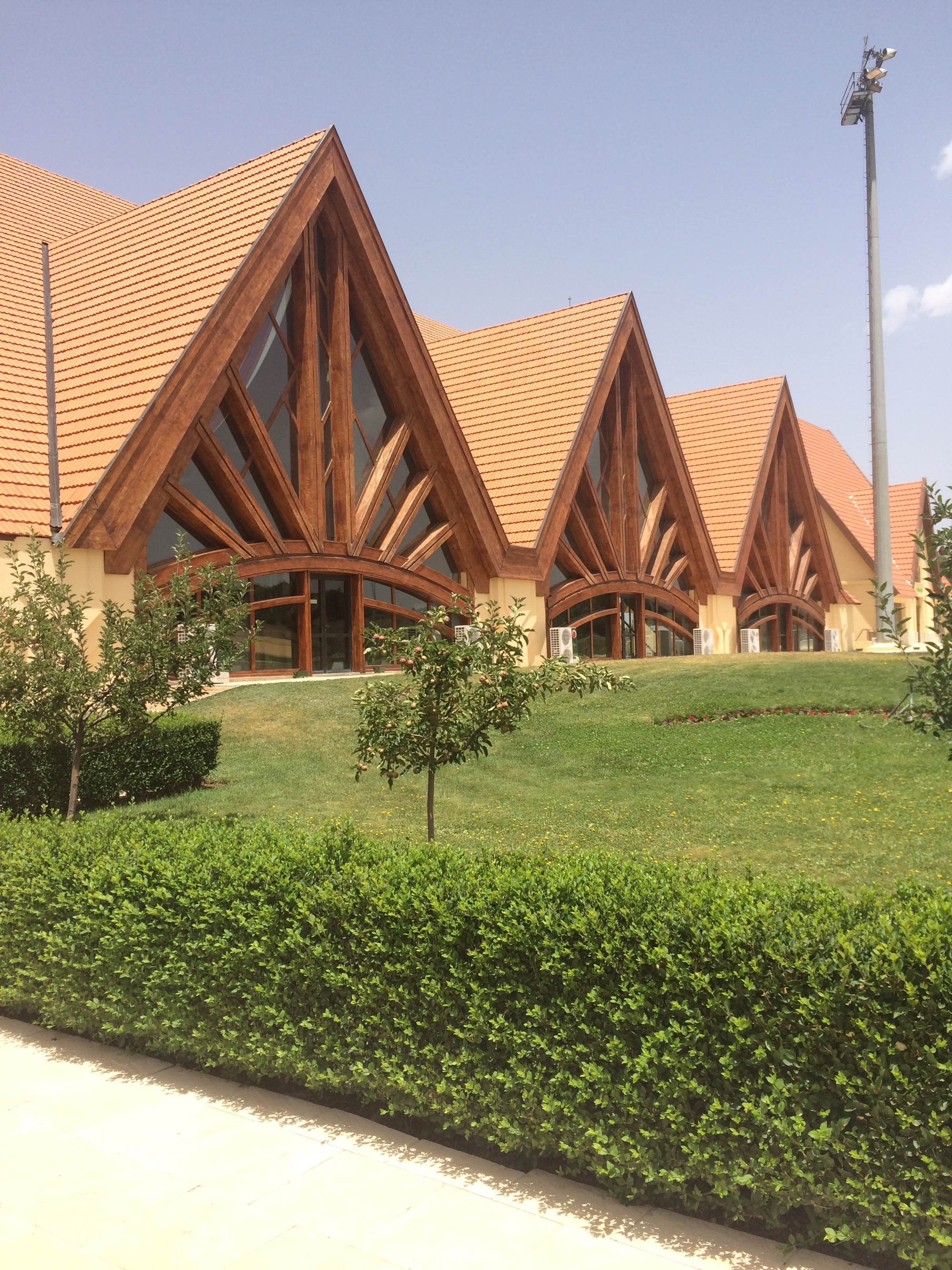Morocco’s Chalet Town: Mimicry or Crosscultural Dialogue?

BY NATALIE WYATT
Part of what makes Morocco such an interesting country to travel in is the fact that one can never quite sum up perfectly the idiosyncrasies and contradictions that define the country’s culture. At once a nation of Arabs, who migrated to the region centuries ago and founded the imperial cities so many visitors flock to each year, Morocco is yet also a nation of Berbers tribes, who have occupied the Saharan dunes and Atlas Mountains for thousands of years. Cross-cultural exchanges between these two groups have produced such things as the green-tiled minarets that define the skyline of Moroccan cities and the distinct geometric patterns on ceramics and clothing found in Souks, bustling markets from Fes to Marrakesh. Although Arab and Berber influences in Morocco have always been strong, the 19th century colonization of North Africa also spawned a great deal of European influence – from the Spanish and, perhaps most obviously, the French. Colonialism is at its core the act of one culture attempting to dominate another. This experience causes lasting trauma on a nation’s psyche, yet can sometimes produce unique hybridized styles and practices that draw from both colonizer and colonized. This new cultural exchange can be strikingly beautiful, though certainly shadowed by painful reality of colonization, or such exchange can simply be awkward mimicry. Ifrane, a small town in central Morocco, exhibits this complex relationship; while it overlooks the Atlas Mountains, it looks more like it belongs in the Swiss Alps.
Ifrane, or at least the Ifrane that exists now, was formed as a small vacation village for French colonials to escape the heat of the imperial cities of Fez and Meknes, both only just over an hour away. It’s an ideal vacation destination: the elevation and cedar forests of the Atlas Mountains keep Ifrane cool in the summertime, and the winter snowfall make for great skiing in the winter months. It became home to a popular ski resort frequented by the Moroccan royal family as well as rich Europeans intoxicated by the novelty of skiing a mere five hours away form the Saharan desert.
The center of Ifrane is constructed in a western European style that contrasts strikingly with the Moroccan Riad. Ifrane was constructed with the “garden city” model in mind. Fashionable in Europe in the period after World War I, the style consists of wide, gently curving roads, with two story chalets surrounded by gardens occupying more than half of the property. In Ifrane, public parks abound, and the streets – like “Rue des lilas” — were named after types of flowers. The space and distribution of the town lies in stark contrast to a city like Fes, whose winding, narrow streets have come to define Morocco. Buildings in Ifrane instead have peaked roofs, chimneys, and crisp wood detailing on the windows and doors, all motifs that recall chalets in the French Alps more than Moroccan Riads.

Ifrane’s architecture is at once charming and jarring, at once unique and fake. Such contradictions uncover truths about the effects of colonialism on a country’s culture. While one can sense the cross-cultural exchange, one can also sense a hierarchy of style, where European models are idealized and mimicked. The transcultural aspects of Moroccan culture, as seen in Ifrane, make one wonder what the line is between extraordinary cultural combination and flat mimicry. Much of what makes Morocco’s architecture so unique is that it has been influenced by three different continents, and thus by a multitude of styles. The cedar carving on the door of a mosque in Morocco may be Berber-influenced, while its ceramic detailing is in a style from Andalusia in Southern Spain, and its bronze work draws from designs found in Senegal.
In the case of chalets of Ifrane, though, the architecture seems mostly to mimic. The buildings present an idealized vision of a pristine Alps town, a sort of amusement park for rich Moroccans, European ex-patriots, and tourists. The style of Ifrane’s structures seems to present little dialogue between the architecture of colonizer and colonized. Instead, it is a reproduction, whose lack of Moroccan influence seems to reinforce the colonial opinion that Moroccan styles had little to no place or value in Ifrane, or even in the European conception of Morocco as a whole.
Ifrane holds historical significance because it reminds Moroccans and visitors alike of a significant yet traumatic history of colonization and of cultural domination. But beyond that reminder, the chalets of Ifrane leave out so much of what makes Morocco, Morocco; its derivative style is a somewhat poor example of Morocco’s complex and contradictory cultural influences.